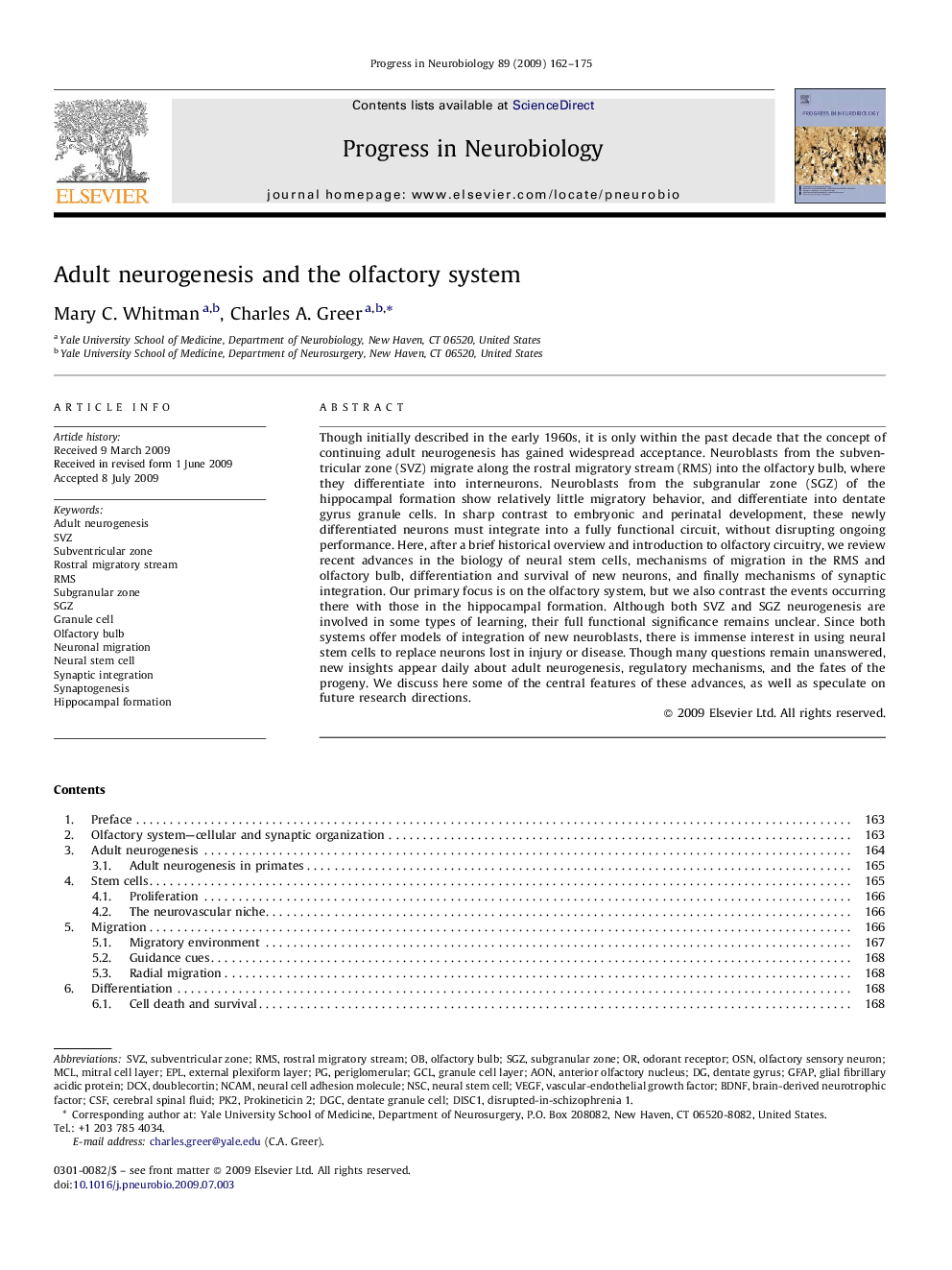| Article ID | Journal | Published Year | Pages | File Type |
|---|---|---|---|---|
| 4353792 | Progress in Neurobiology | 2009 | 14 Pages |
Though initially described in the early 1960s, it is only within the past decade that the concept of continuing adult neurogenesis has gained widespread acceptance. Neuroblasts from the subventricular zone (SVZ) migrate along the rostral migratory stream (RMS) into the olfactory bulb, where they differentiate into interneurons. Neuroblasts from the subgranular zone (SGZ) of the hippocampal formation show relatively little migratory behavior, and differentiate into dentate gyrus granule cells. In sharp contrast to embryonic and perinatal development, these newly differentiated neurons must integrate into a fully functional circuit, without disrupting ongoing performance. Here, after a brief historical overview and introduction to olfactory circuitry, we review recent advances in the biology of neural stem cells, mechanisms of migration in the RMS and olfactory bulb, differentiation and survival of new neurons, and finally mechanisms of synaptic integration. Our primary focus is on the olfactory system, but we also contrast the events occurring there with those in the hippocampal formation. Although both SVZ and SGZ neurogenesis are involved in some types of learning, their full functional significance remains unclear. Since both systems offer models of integration of new neuroblasts, there is immense interest in using neural stem cells to replace neurons lost in injury or disease. Though many questions remain unanswered, new insights appear daily about adult neurogenesis, regulatory mechanisms, and the fates of the progeny. We discuss here some of the central features of these advances, as well as speculate on future research directions.
